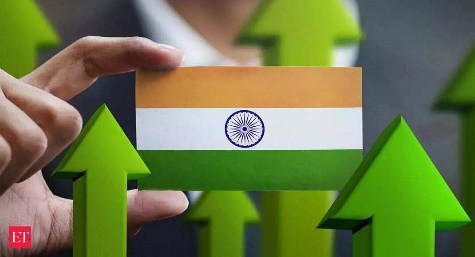India’s Human Development Index 2025

- 08 May 2025
In News:
India has made steady progress in the Human Development Index (HDI), improving its rank from 133rd in 2022 to 130th in 2023 among 193 countries. Its HDI value rose from 0.676 to 0.685, reflecting advancements in key areas such as health, education, and income. Despite these gains, significant challenges, particularly inequality, continue to limit India’s overall human development.
Understanding India’s HDI Progress
The HDI is a composite measure that captures a country’s average achievements in three core dimensions: health (life expectancy), education (years of schooling), and income (gross national income per capita). India currently belongs to the ‘medium human development’ category and is approaching the threshold for ‘high human development’ (an HDI value of 0.700).
Several factors have driven India’s recent improvement:
- Health: Life expectancy increased markedly from 58.6 years in 1990 to 72 years in 2023. This improvement is supported by flagship health schemes like Ayushman Bharat, the National Rural Health Mission, Janani Suraksha Yojana, and PoshanAbhiyaan, which have enhanced healthcare access and nutrition.
- Education: The expected years of schooling grew from 8.2 years in 1990 to 13 years in 2023, while mean years of schooling rose from 4.1 to 6.9 years. Policies such as the Right to Education Act and the National Education Policy 2020 have played critical roles in improving educational quality and accessibility.
- Income: India’s per capita Gross National Income surged from $2,167 in 1990 to $9,046 in 2023. Social welfare programs like MGNREGA and Jan Dhan Yojana have contributed to this growth by lifting approximately 135 million people out of multidimensional poverty between 2015-16 and 2019-21.
Persistent Challenges: Inequality and Gender Disparity
Inequality poses a major impediment to India’s HDI progress. It is estimated that disparities reduce India’s HDI by 30.7%, one of the highest losses in South Asia. The wealthiest 10% earn nearly 57% of the national income, while the poorest 50% share only 13%. Gender inequality further complicates the picture: India’s Gender Development Index (GDI) stands at 0.874, with female HDI (0.631) significantly lower than male HDI (0.722). Despite policy efforts, female labor force participation and political representation remain limited.
Regional and Global Context
Regionally, India lags behind neighbors like China (75th) and Sri Lanka (89th) but shares a similar HDI value with Bangladesh (130th), and surpasses Nepal (145th) and Pakistan (168th). Globally, the 2025 Human Development Report highlights a slowdown in HDI growth—the slowest since 1990—but emphasizes the transformative role of Artificial Intelligence (AI) in fostering inclusive development. India holds 20% of global AI researchers, positioning it to harness AI’s potential in sectors such as healthcare, education, and productivity.
Strategic Innovations and National Initiatives
India’s pursuit of sustainable development complements its HDI goals through key initiatives:
- Scientists have developed a metal-free catalyst leveraging mechanical energy for sustainable hydrogen fuel production, supporting the National Green Hydrogen Mission to promote clean energy.
- The Indian Navy’s deployment of INS Sharda to the Maldives for its inaugural Humanitarian Assistance and Disaster Relief (HADR) exercise under the MAHASAGAR vision showcases India’s leadership in regional disaster preparedness and maritime security.
- Developments in regional defense, such as Iran’s unveiling of the solid-fuel GhassemBasir medium-range missile, highlight ongoing security challenges necessitating vigilance and capability enhancement.
Way Forward
To advance into the ‘high human development’ category, India must:
- Implement targeted policies to reduce income and gender inequalities.
- Invest in quality education and healthcare, especially for underserved populations.
- Promote inclusive economic growth benefiting marginalized groups.
- Leverage emerging technologies like AI responsibly to enhance public services without deepening disparities.
- Strengthen regional cooperation and disaster resilience to protect socio-economic gains.
Conclusion
India’s HDI improvement reflects meaningful progress in health, education, and income. Yet, to fully realize its human development potential, India must tackle persistent inequalities and strategically harness technological innovations alongside regional cooperation. With sustained, inclusive efforts, India can continue its upward trajectory toward equitable growth and global leadership.
